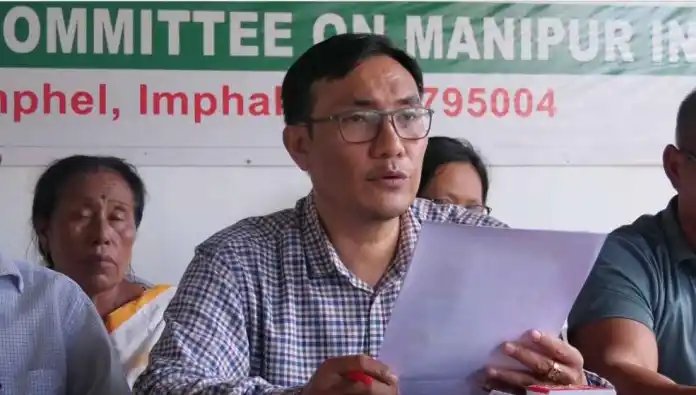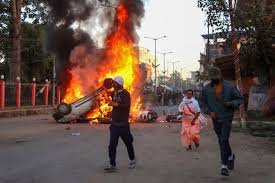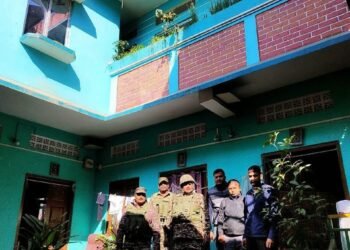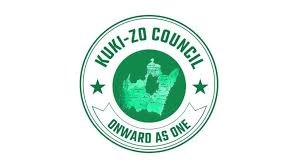The memorandum cites the Manipur State Darbar Rules of 1907 and judicial rulings from 1963 and 1979 to argue that both the hills and the valley were always under a unified administrative and legal authority.
BY PC Bureau
November 17, 2025: The Coordinating Committee on Manipur Integrity (COCOMI) has submitted a detailed memorandum to Prime Minister Narendra Modi, strongly contesting the claims made by the United People’s Front (UPF) and the Kuki National Organisation (KNO) during their November 6–7 meetings with the Ministry of Home Affairs in New Delhi.
Signed by COCOMI convenor Khuraijam Athouba, the 15-page memorandum—copies of which have also been forwarded to Union Home Minister Amit Shah and Northeast Adviser A.K. Mishra—seeks to “correct the historical record” and urges the Centre not to entertain what it describes as “ahistorical, legally untenable and politically motivated assertions” regarding Kuki ancestral land rights and the jurisdictional history of Manipur’s hill areas.
COCOMI Accuses UPF–KNO of ‘Deliberate Historical Distortion’
According to the memorandum, the UPF–KNO delegation had claimed before MHA officials that the hill areas of Manipur “were never under the rule of the Maharaja” and therefore should form the basis of a separate Kuki administrative unit. COCOMI calls this assertion “deliberate misrepresentation” designed to strengthen the demand for a separate Territorial Council or Union Territory.
“This claim collapses entirely under the weight of documented historical evidence, codified administrative rules and judicial verdicts,” COCOMI writes. “The hills were never outside the authority of the Manipur State.”
Historical Evidence Cited: Darbar Rules, Colonial Records, Royal Authority
To substantiate its position, COCOMI cites:
- The Manipur State Darbar Rules of 1907, which explicitly placed both the hill and valley regions under the administrative control of the Maharaja and the Darbar, including land, forest and revenue management.
- British administrative records, which consistently identify the forest and hill tracts of Manipur as the property of the Maharaja, administered through the Darbar.
- Royal Proclamations and pre-merger documents, which reaffirmed the undivided nature of Manipur’s territory prior to its merger with the Indian Union.
The memorandum argues that these records demonstrate “centuries of continuous authority” of the Manipur State over the hills—contradicting the KNO–UPF stance.
READ FULL COCOMI Memorandum
Post-Independence Legal Continuity: Courts Upheld State Ownership
COCOMI further points to two landmark judicial rulings that it says conclusively settle the question of jurisdiction and land ownership:
- Manipur High Court, 1963
– Affirmed that all rules of the Manipur State Darbar remained valid after the merger, pursuant to Article 372 of the Constitution, and continued to govern the entire territory, including the hills. - Gauhati High Court, 1979
– Ruled that forests and hill areas formed part of the State’s property and that ownership had lawfully vested in the State Government.
– Clarified that tribal villages enjoyed usufructuary rights, such as jhum cultivation and grazing, but not proprietary ownership.
“These rulings reinforce that the hill tracts have always been part of Manipur’s administrative and legal domain,” the memorandum asserts.
READ: Manipur: Kuki-Zo Groups Deny Reports of MLAs Joining Govt
COCOMI Challenges Kuki Indigeneity Claims
One of the strongest sections of the document is devoted to challenging the historical basis of Kuki indigeneity. COCOMI argues that:
- The significant Kuki presence in Manipur dates only to the 1840s.
- Their migration was orchestrated by British administrators following the First Anglo-Burmese War.
- Lt. Col. William McCulloch, Political Agent of Manipur (1844–1863), intentionally settled Kuki villages to secure the eastern frontier, raise levy forces and expand cultivable land.
“This was not organic migration,” the memorandum states. “It was a colonial frontier policy, lacking any pre-colonial continuity.”
COCOMI argues that according to international standards—especially the UN Martínez Cobo Working Definition of ‘indigenous peoples’—the Kuki claim to indigeneity fails because it does not predate colonial intervention.
Term ‘Kuki’ Also Colonial, Not an Indigenous Identifier
The committee additionally challenges the use of the term “Kuki” as a collective identity, describing it as:
- A British-imposed exonym, not a self-identifier used by the groups prior to colonial rule.
- A product of colonial homogenisation, grouping together multiple clans and tribes that historically used distinct ethnonyms.
Thus, COCOMI contends, building political claims on a colonial term “lacks cultural and historical authenticity.”
Warns Centre Against “Rewarding Ahistorical Claims”
In its concluding remarks, COCOMI urges the Central Government to reject UPF–KNO assertions that it believes could undermine the State’s territorial integrity.
“Rewarding such claims would legitimise historically unfounded narratives and destabilise the long-standing administrative continuity of the State of Manipur,” the memorandum warns.
COCOMI emphasises that Manipur’s territory—both hills and valley—has remained a single, indivisible administrative unit through pre-colonial monarchy, colonial rule and post-Independence governance.












